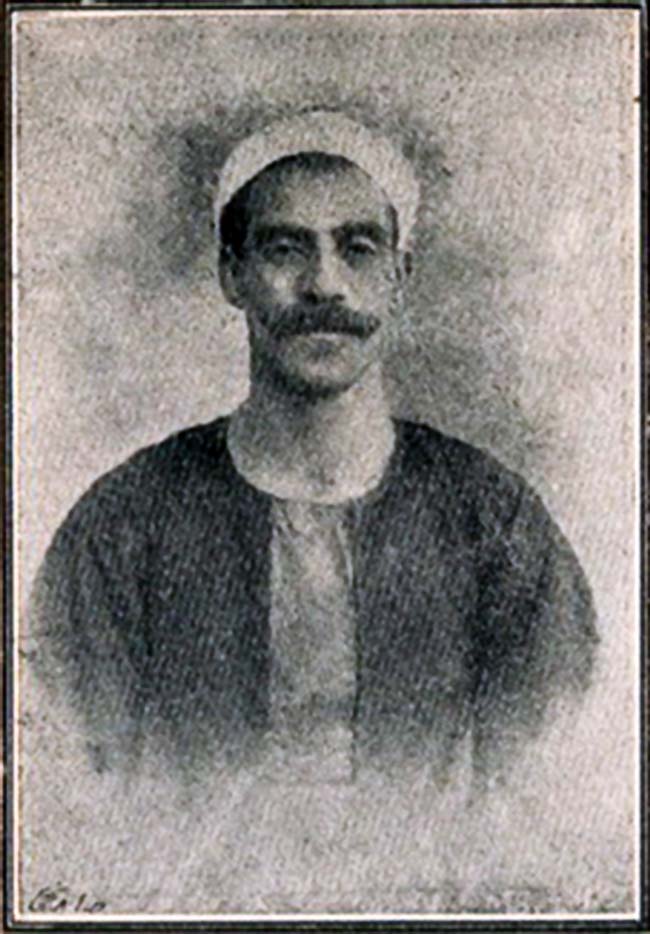Images
All images are courtesy of AMAR Foundation

search

All images are courtesy of AMAR Foundation

Dawr Anā fu’ādī yōm ‘ishi’
The Arab Music Archiving and Research foundation (AMAR), in collaboration with the Sharjah Art Foundation (SAF), presents Sama‘.
Sama‘ is a show that discusses our musical heritage through comparison and analysis…
A concept by Mustafa Said.
Dear listeners,
Welcome to a new episode of Sama‘
In this episode, we will resume our discussion about dawr a‘raj — structured to other rhythms than the known binary pulse’ rhythms, i.e. to 3, 7, or 9 pulse’ rhythms…etc.
We have often discussed the very fair competition between Ibrāhīm al-Qabbānī and Dāwūd Ḥusnī concerning dawr: one would compose a dawr to the sūzdalār while the second would compose a dawr to the nakrīz… both always using strange maqām in their dawr.
Ibrāhīm al-Qabbānī composed today’s dawr Anā fu’ādī yōm ‘ishi’ to the ḥijāzkār kurdī maqām and the aqsāq rhythm. We had already analysed ‘Abd al-Raḥīm al-Maslūb’s — Ibrāhīm al-Qabbānī’s brother-in-law — dawr Fī zamān el-waṣl to the aqsāq, and listened to it in many different recordings.
The recording of today’s dawr Anā fu’ādī yōm ‘ishi’ is the full version performed by Sayyid al-Safṭī, made in 1912. It is said that Ibrāhīm al-Qabbānī recorded it. But it seems that the recording was never published, and is thus lost. So let us make do with Sayyid al-Safṭī’s recording.
As we said, the dawr is to the ḥijāzkār kurd, and to the 9-pulse’ aqsāq rhythm whose display is much more significant than in dawr Fī zamān el-waṣl, i.e. he shifted and went back, and also dealt with this rhythm in many different ways.
Let us listen to the ḥijāzkār kurd dūlāb played to an ordinary 4-pulse’ rhythm, followed by the relatively long madhhab Anā fu’ādī yōm ‘ishi’ performed by Sayyid al-Safṭī, and that apparently includes fixed instrumental mujāwaba, resembling ‘Abd al-Wahāb’s and Sayyid Darwīsh’s dawr.
Let us listen…
(♩)
Here are some important remarks concerning the dawr’s madhhab:
There are numerous ascending and descending musical scales and leaps that are not usual in dawr melody, and that would later characterise the melody of Sayyid Darwīsh’s dawr;
Also, Sayyid al-Safṭī dealt with the ḥijāzkār kurd maqām on a high octave, as if it were a bayyātī — not even a Turkish ‘ushshāq —, even when he descended very low, still sang to the bayyātī. … Not at all as if dealing with the ḥijāzkār kurdī maqām or with the ḥijazkār kurdī pattern.
This is followed by the tafrīd section 'El-ṣabb min kitr el-gawa' at the turn of the first record-side, and then by the second side composed to the bayyātī / kardān high scale. He continued to the bayyātī and concluded to a high octave, performed a‘raj at the ṣabā, but neither descended anymore nor reached the rāst scale that is the position of the ḥijāzkār kurdī …
(♩)
The henk section should start with āhāt and layālī. Whereas, here, it starts with 'Yifḍal yi’āsī': they answer with 'yi’āsī' whose melody is the one the āhāt start to…
(♩)
Let us now analyse the āhāt or henk section that is also the ascending section here, …as if it were the waḥāyid section: he started the waḥda as if he were entering the root of the bayyātī then shifts to the ḥijāz, singing it as a ḥijāzkār. He shifted to the ḥijāzkār kurdī pattern such as in the Turkish sāzindā…
(♩)
In the āhāt shift from the kardān’s second scale-step i.e. the maqām’s ninth, he went back again to 'yi’āsī, yi’āsī'. It is truly a very strange dawr structure: he shifted from the henk to the waḥāyid in the same word, yet performed them before the āhāt and repeated them after those. He then went back to singing a waḥda to the bayyātī / kardān, then went back up to the third, i.e. he sang a waḥda, linked the first, jumped to the second, went back to the first, then jumped from the first to the third also at 'yi’āsī, yi’āsī'…
(♩)
He then performed a tafrīd to a high octave (jawāb) that sounds like a scream, and concluded his khātima (conclusion) that is the only part where he descends to the ḥijāzkār kurd.
Let us listen to the last high scream, then to its taslīm to the dawr’s conclusion.
(♩)
Beautiful… A true master!
We have heard the conclusion that repeats the last part of the madhhab… A reminder of what would happen in future dawr, especially in Sayyid Darwīsh’s.
So let us listen to dawr Anā fu’ādī yōm ‘ishi’ recorded around 1912 by Gramophone on three 25cm record-sides, i.e. one record and a half, composed by Ibrāhīm al-Qabbānī, written by Aḥmad ‘Āshūr, and performed by Sheikh Sayyid al-Safṭī accompanied by Ibrāhīm al-Qabbānī (‘ūd), Muḥammad al-‘Aqqād (qānūn), Sāmī al-Shawwā (kamān), and Muḥammad Abū Kāmil al-raqqāq (percussions).
(♩)
Sama‘ was presented to you by AMAR.